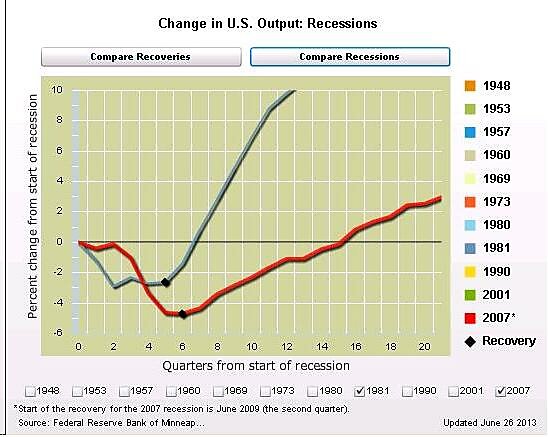National politicians and commentators are once again worrying that “political gridlock” is preventing government from “fixing the nation’s problems.”
President Obama began this lament’s latest chorus last week during his economy snoozer speech at Knox College in Illinois. “[O]ver the last six months, this gridlock has gotten worse,” he said, vowing, “I will not allow gridlock, or inaction, or willful indifference to get in our way.” Earlier this week the New York Times asked Obama, “Do you worry that [a stalled agenda] could end up being your legacy because of the obstruction … and the gridlock that doesn’t seem to end?” That prompted National Journal writer Ron Fournier to claim that the current gridlock is the result of a lack of will by political leaders: “At the White House and in Congress, most Democrats and Republicans have abandoned hope of fixing the nation’s problems.”
Many Republicans may be asking, “What gridlock?” After all, President Obama has had little trouble advancing his agenda, from the American Recovery and Reinvestment Act and the subsequent series of fiscal stimulus and “jobs” bills, to the Dodd-Frank Act and creation of the Consumer Financial Protection Bureau, to the Patient Protection and Affordable Care Act (aka Obamacare), to tax increases. The GOPers would argue that the president’s setbacks have been few, temporary, and/or small. As evidence that he doesn’t feel too fettered by gridlock, they might point to his “compromise offer” to raise corporate taxes in exchange for increasing government spending.
But the Republicans are wrong. Washington is severely constrained by gridlock, and that is harming Americans’ standard of living, health, and financial security, and exacerbating unemployment, income equality, and our children’s education and future well-being. Right now, political obstructionism is blocking numerous policy ideas and legislative proposals that would greatly benefit Americans. Among them:
- Repeal Obamacare and adopt true comprehensive health care reform that would expand access to care, improve efficiency, and increase care quality.
- Modernize Social Security so that it better provides for people’s retirement needs, or else end Social Security taxes so that people can better afford to prepare for retirement (and other life needs) on their own.
- Replace Medicare with health care for seniors that won’t financially cripple future generations.
- Overhaul public education and enable American children to attend better, more effective schools.
- Reduce the size and cost of the federal government, so that people can use more of their money to improve their lives.
- Rationalize regulation so that the markets better serve consumers.
- Reaffirm civil liberties, instead of eroding them.
- Adopt a more rational foreign policy and national security strategy.
And many, many more.
But maybe you disagree with those proposals and are pleased that they’re gridlocked (though I tell you sincerely that people would be much better off if they were implemented). That’s the thing: there are a lot of Americans who agree with me, and a lot who agree with President Obama’s proposals, and a lot who support other policy ideas. (And no, these different groups aren’t “1‑percenters” on one side and “working Americans” on the other.)
Evidence and analysis don’t demonstrate clearly that just one set of proposals is “right” and all others are “wrong,” nor does morality show that just one set is virtuous and all others are wicked. Rather, the many unknowns of human existence, the individual preferences and concerns of different people, and the diversity of specific circumstances across the United States result in individuals favoring different policies and opposing different policies.
In such a world, “political gridlock” is not a problem—rather, it’s the natural and appropriate result of a representative government that foolishly tries to impose national solutions for private, local, and regional problems in an incredibly diverse and large nation of 315+ million people.
Hopefully, our gridlock hand-wringers will one day abandon the naïve, provincial idea that a few congressional votes can “fix the nation’s problems,” and instead appreciate the genius of individual liberty and subsidiarity.



